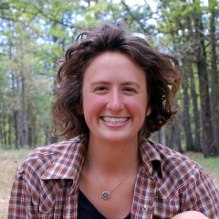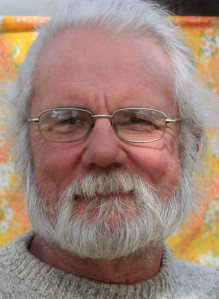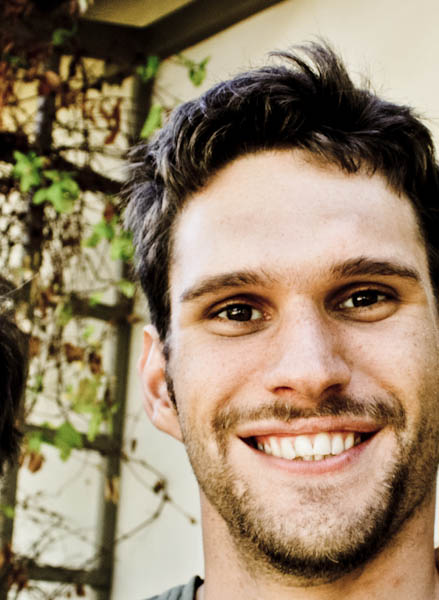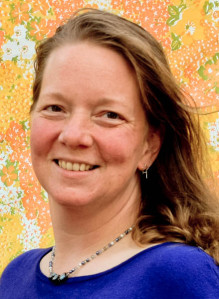THE B2M VILLAGE
B2M scalability timeline
B2M scalability timeline ▼
Lindsay Hagamen
forestry work and research, resident gardener
|
My interest in B2M lies at the intersection of environmental stewardship and resilient rural economies. An intersection that is older than the words themselves. Economy, per its Greek origin, refers to stewarding or providing for our home, earthly and otherwise. In order to do so well, we must understand, or at least live in accordance with, the natural laws. I bring this premise, along with my academic background in ecosystem science and terrestrial nutrient cycling to the B2M project.
When I was 18, I lived amongst the hardworking yet very poor people of the Ecuadorian Andes. In these remote mountain villages, subsistence farmers struggled to generate the funds to send their children to elementary school. Many families grew a "cash crop", such as coffee or chocolate, which they harvested specifically for market, receiving a small fraction of the value they created with their labor. In a land where the way of life evolves around the cycles of sun and rain and the people you call family, such cash crops subjected the villagers to the fluctuations in the global economy.
It became clear to me that the survival of the rural way of life required high value "cash crops", value that was both useful to the local people and recognized in the global economy. Otherwise, rural communities would likely continue to export, at minimal profit but high environmental costs, the raw materials that fuel the world. B2M has the potential to be a technology in the service of community the whole world round, reversing the fundamental power dynamics shaping rural communities, granting those that steward the natural world the power of choice.
On any given day, you may find me working in Windward's forestland, tending to our growing forest garden, connecting with others who believe in open source science, or ruminating on the power of creating the world we want to call home.
Walt Patrick
project lead, chemical engineering, resident book worm
|
I studied chemistry at a small college in eastern Tennessee, and graduated from the University of Tennessee at Chattanooga. I was working as a chemist at a carpet mill in northwestern Georgia when the Oil Embargo hit, and the carpet industry collapsed almost over night because carpets are pretty much made out of oil. That drove home the lesson that sustainable communities can't afford to gamble their survival on the importation of non-renewable resources.
My years spent in Appalachia helped me see how poor, rural communities were being drained of their natural resources and their talented young people. I could see that it was essential that another path be developed, one which used renewable resources such as sunshine, rain and carbon dioxide to meet basic human needs. Since then, much of my life has been dedicated to exploring that path. B2M is the best way I know of creating a sustainable energy system capable of breathing new life into rural communities.
I realized early on that the challenge of creating sustainable community was a group undertaking, and for more than forty years, I've lived in intentional community; it's not always been easy, but it's never been dull. It's a path that has allowed me to weave the strands of my life into a specific piece of land. This journey has helped me understand how vital it is for people to place themselves between the land and the systems that are steadily grinding the land into dust, along with the many lifeforms that depend on it. I feel very fortunate to have found a group of people who are committed to stopping the destruction by using heart, body and soul to say there's no trespassing on this land because here we stand.
As a steward, I'm committed to being one of those people. Perhaps you are one too.
Ruben Schaer
electrical engineering, media editing, resident programer.
|
I grew up and went to school in Switzerland, one of the wealthiest and most industrialized nations of the world. Surrounded by an urban environment that seemed saturated in design and technology, my philosophical curiosity led me to study electronics: I needed to understand this strange and engineered world that I was born into, to understand the wizardry behind radio and television, cellphones and computers.
Over the years I noticed the tendency of my home country to invite a rift between the natural and technical environment, estranging humans from their most sacred existential needs and purposes. I wanted no part in the future such a life held for me, and felt a strong calling to explore a different path into a new world. In 2009 I decided to leave Switzerland and have been on the adventure of a lifetime ever since.
I care about B2M because I believe that to understand nature is to understand humanity's cradle, and to understand technology is to understand the environment we have created for ourselves today.
Humans have interwoven nature and technology all through out history, from the sophisticated Greek irrigation systems to the windmills of the Netherlands. To me, B2M creates a new balance between nature and technology, one that enables a community to grow and prosper without cutting itself off from nature.
I believe that technological literacy is a good thing, and my involvement with B2M gives me a chance to help demonstrate how much benefit can come from practical applications of computer science, electronics, physics, and chemistry.
Andrew Schreiber
forestry work and research, resident philosopher.
|
As an artist, philosopher, farmer and amateur scientist, my passions are diverse and far reaching. The primary skills I bring forward for the Biomass2Methanol Project are in the arenas of Ecological Stewardship (working with the forest, and evolving management plans and practices) and Artistic Direction (helping shape the B2M Projects public face).
I am engaged with the Pine/Oak woodlands on a very visceral and personal level. Limbing trees, and helping to guide the land-use of each little nook and cranny for the benefit and integration of all of the various creatures on Windward's land base. In some sense, I am in communication with the forest, and can give feedback to others in the project about how the forest is responding to our treatment of it.
My big picture goal is to foster an attitude of reverence and cooperate with the living networks around us. To meet or basic needs (food, energy, clothing, shelter, and connection) by working with the innate drive of the living beings around us to do necessary and important work. Whether letting the dairy goats be weed-eaters, or using bacteria to clean the oil from a sheep's fleece, there is much work to do and us humans need all the help we can get.
As I see it, the task before us is to learn how to cooperate with, foster and integrate our lives into the abundant energy networks that exist all around us. B2M is a project that is effective because it's local, accountable because it's rooted in Stewardship, and humane because it's scaled to meet the needs of real rural communities.
Opalyn Brenger
gasification, construction engineering
|





